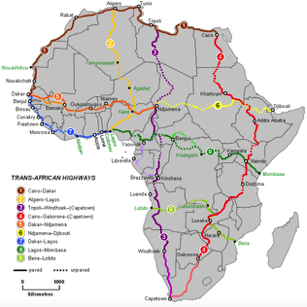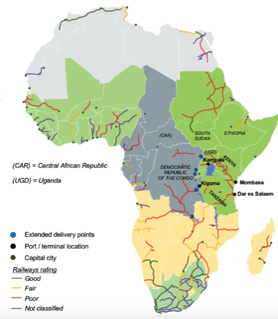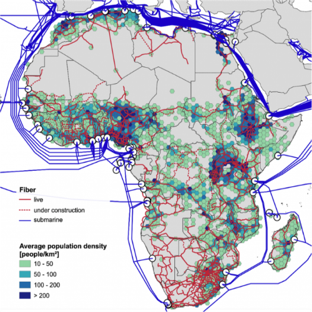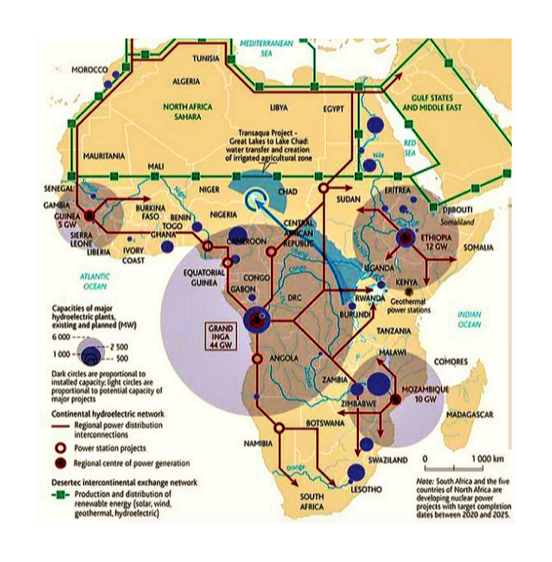Rationale for an Integrated Modular Railway Track
Environmental Sustainability Value Proposition
Optic Fibre and Power Network Value Proposition
Relative to developing and other emerging economies the railway infrastructure in Africa and other emerging economies will require massive expansion or renewal going forward. Ideally these developments need to be as sustainable as possible.
Circular Economic thinking will go a long way towards using what we already have, repurposing what we can,
and building what we need with the least amount of resources and environmental footprint.
The integrated smart infrastructure solution developed by Optitrac® is specifically aimed at developing economies. We believe that by using more of what is there already, more can be achieved, morejobs can be created, and more economic opportunities can be unlocked faster.
Ultimately, one of the core infrastructure developments that will be needed in Africa is the power grid. Increasingly, these various forms of infrastructure will all require electricity. Power generation capabilities will be built using a mix of existing and renewable energy sources, whether centralisedor decentralised, together with the relevant power distribution grids. Various initiatives are also underway to provide for strategically interconnecting power grids across various participating countries.
Ideal for new, replacement and expanding existing railway infrastructures.
Enables cross border integration of narrow, standard or future wide gauge high speed rail environments.
Suitably designed for a multiple embedded service delivery system for fibre and power networks, including fibre
and power requirements for the rail servitude itself.
Better operational efficiencies with additional revenue streams derived from shared infrastructure across multiple industries, whilst based on a cost-effective model with improved feasibility.
Has operational efficiency and safety as main objectives.
Can be used be utilised in combination with other or existing rail applications
such as passenger, heavy haulage, tunnels and mining.
Reduction in instances and impacts of cable theft across rail, telecom, and power sectors.
Optitrac® installed as ballastless slab track do not require the use of sleepers or ballast that require relatively expensive maintenance due to screening and tamping of the ballast to maintain the elevation and geometry of the track. The track is therefore static, instead of dynamic, with consistent and continuous support of the train axles and reduced mechanical stresses on the trains as well.
Integrated power and communications infrastructure needed for electrification and signalling along the railway. Depending what the railway will be used for, this can be extended to electrification of the railway for powering the trains was well. Because the power cables are embedded in the railway, it also reduces the occurance of theft, which means other types of metals can be considered for reducing transmission losses.
The fixed geometry provide improved energy efficiency of trains running on tubular or balastless tracks. This is the result of more consistent geometries achieved than with traditional ballast. It also provides a significant amount of reduction on friction and wear on the rolling stock, especially around curved sections of rail.
Optitrac® can be designed for any axle load, whether for high speed rail, passenger rail, freight or heavy haul environments for mining, industrial or port environments.
One Integrated and Embedded Fibre and Power Network built into the railway.
Optitrac® consists of an integrated system of modular, prefabricated sections that simultaneously caters for all
railway network, fibre network, and power network requirements in one integrated design.
Allows for point-to-point, point-to-multiple points, multiple points-to-multiple points and multiple points-to-point
network solutions.
Adaptable in capacity and scalability for planned and unplanned requirements. Additional breakouts can be installed after construction simply by adding additional manholes in the servitude and splicing of the fibre or power cables with minimal actual downtime.
Enables one turnkey supplier combined project instead of three or more separate projects that need to be coordinated from initiation, through design, build operations and maintenance phases.
Has ease of connectivity to national, international and local network infrastructures. No way-leave delays or disruptions, no breakages of links due to earthworks or other unintended damages. One centrallly managed servitude.
Provides an attractive investment model with a multiple application based solution in one.
Also provides a value-add cost-effective communication or power distribution solution for rural communities, business, manufacturing or processing operations across Africa.
The solution is entirely South African in all respects with no international dependencies from a design, manufacturing, licensing or sub-licensing perspective.
Infrastructure Development and Railway Value Proposition
Smart and integrated railway infrastructure is a key aspect of Global Net Zero and Green Infrastructure roadmaps aiming to reduce carbon emissions and other environmentally harmful activities.
The environmental benefits of Optitrac® has several layers, starting with improved energy efficiency of trains running on ballastless tracks. This is the result of more consistent geometries and reductions in friction achieved than with traditional ballast tracks.
Efficiencies in prefabrication and transportation of the modular units means that better proximities can be achieved relative to where the infrstructure needs to be built. Modules can also be transported by rail based vehicles running on the sections of tracks already completed, to transport the modules as well as offload the modules into the exact position needed for installation. This eliminates the need duplication in the handling of heavy construction materials.
No need for expensive machines and disruptions to railway operations to restore the ballast on the track or re-alignment of the rails on the sleepers.
Recycling of rock for road servitudes located next to the railway or in close proximity. This eliminates the need for establishing new mines for supplying rock and transporting this to required locations. Mobile rock crushers are used to break the rocks recycled from the ballast of the existing railway.
By building the rail, power and fibre network into one integrated solution, three different types of infrastructure is created at the same time. This eliminates a significant amount of carbon footprint resulting from additional
earthworks needed for cable trenching as well as additional materials, labour and transport, associated
with building separate fibre or power network servitudes.
The development of long term strategies and planning would be most efficient it takes place in coordination and involvement of multiple industries. It can no longer be done in isolation.
While it would be near impossible to synchronise infrastructure projects between different countries as well as different industries, the use of multiple purpose servitudes designed for multiple tenantsand different industries will go a long way towards improving the individual and combined feasibilities of infrastructure development projects of this nature.



Road Infrastructure
Fibre Infrastructure

Railway Infrastructure

Power Infrastructure
Optitrac® makes it possible to accelerate these developments as well as reduce the overall cost of building
and maintaining the various infrastructure. Furthermore, the concept also incorporates circular economics
into the design, whereby outdated railway sections or servitudes can also be revitalised.
CIRCULAR ECONOMICS
Development Funding
PUBLIC SECTOR PROJECTS
PRIVATE SECTOR PROJECTS
